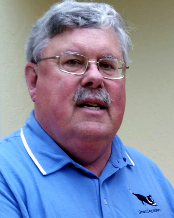
SMART DOG MININGTM
It
takes a smart dog to find hidden treasures
An Introduction to Flowing Film Concentration
Launderers, spirals and tables fall into the general class of
flowing film concentrators were the primary means of separation is a
flowing film combined with stratification. They utilize the
principal of flowing film separation, and combine this with bed
stratification to enhance recovery and increase capacity.
The actual separation mechanism varies by device, but the
general principal is having a feed stream a rate where the coarse
heavy particles settle to form a bed which then aids the
concentration of finer heavy particles.
The lighter particles are then carried away by the flow of
water. In the case of
spirals, centripetal forces aid in the separation.
A flowing film in a gravity separation device introduces additional
forces, besides what is discussed in
An Introduction to Gravity
Concentration. The principal effect encountered comes from the
flow usually is not uniform from one place to another. As a result,
the shearing forces between adjacent layers of fluid produce
rotation and other effects on various particles.
Figure 1 – Velocity Distribution in Flowing Current


1.
Material of low density is carried faster than material of high
density.
2.
In mixtures of particles of a range of sizes coarse particles in
general are carried along the bottom of a stream faster than fine
ones.
Launders, in principle at least, represent an ideal method of
gravity concentration. In theory the bed density in a launder stream
increases from the top to the bottom, a desirable condition from the
standpoint of selectivity in the separation. The mobility decreases
with depth. If heavy material is withdrawn from the bottom of a
flowing stream, it is evident that it will at some time have passed
through a zone where the bed density is as high and the mobility as
low as practicable - condition already recognized as most desirable
in gravity concentration processes. Launders have the additional
advantage of requiring a minimum number of moving parts in their
construction.
1.
Large heavy particles.
2.
Large light particles and small heavy ones.
3.
Small light particles.
1.
Large light particles.
2.
Large heavy particles.
3.
Small heavy particles.
Spirals behave in general like a launderer, but with the addition of
centrifugal force (actually centrifugal force is an apparent force,
and the actual action is a "fictious force" caused by the inertia of
the particles and is a reaction to being confined by the outer
wall). This causes the
water to pile up on the outer edge with the lighter and finer
particles and the larger heavier particles to report to the inside.
A cross section of this action is shown in Figure 3.

Beyond this the actions are very similar to a launder.
Concentrating tables (or shaking tables) introduce no principles of
separation that have not been considered. The sequence of hindered
settling followed by flowing stream selection is frequently utilized
by submitting material to be concentrated to a preliminary
classification. This is so common a practice that classification and
tabling has almost come to be recognized as a unitary process.
Figure 4 – Table

A theoretical objection to shaking tables is found in the fact that
mobility is imparted to the bed of material from beneath, with the
result that a zone of low bed density will be found immediately
adjacent to the surface. The separation is thus not as sharp as
could be desired at any one place. In effect, however, the
separation occurring between any two riffles is supplemented by the
re-treatment between the adjacent pair and the large number of
successive separations produces an acceptable end result.
In discussing the mechanics of hindered settling (in
An Introduction to Gravity
Concentration), nothing was said about the nature of the fluid
beyond the fact that it possessed viscosity and was capable of
exerting a force against particles moving relative to it. In air
tables the fluid in question has the property of being compressible.
This property in itself introduces no new forces into the behavior
of a bed of particles being separated. The principles are the same.
Hindered settling occurs in the same way as though the fluid were
incompressible. When operating with deep beds of material, however,
the air in the lower portion is under the pressure of the bed and
undergoes considerable change in volume in rising to the top.
Frequently this causes geysering in an improperly operating device
and is overcome by maintaining the bed in a state of partial
mobility through shaking, flowing, or other movements.

o
40+
years’ experience in the mining industry with strong mineral
processing experience in Precious metals, copper, industrial
minerals, coal, and phosphate
o
Operational experience in precious metals, coal, and phosphate plus
in petrochemicals.
o
Extensive experience studies and feasibility in the US and
international (United States, Canada, Mexico, Ecuador, Columbia,
Venezuela, Chile, China, India, Indonesia, and Greece).
